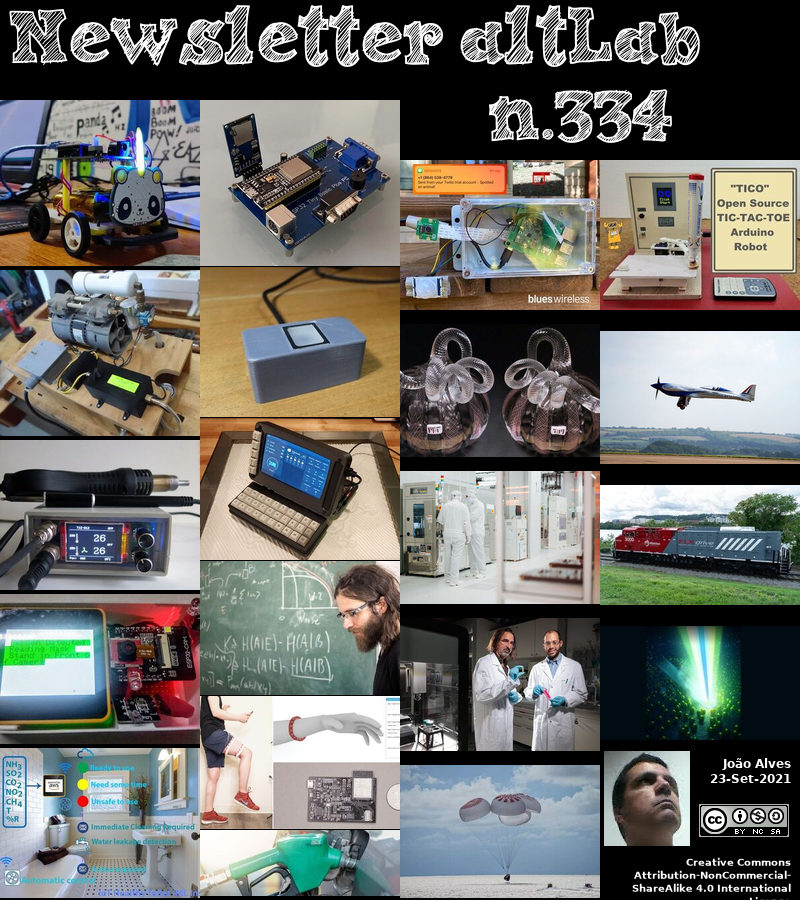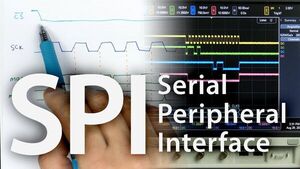2021-09-23 - Nº 334
Editorial
Esta é a Newsletter Nº 334 que se apresenta com o mesmo formato que as anteriores. Se gostar da Newsletter partilhe-a!
Todas as Newsletters encontram-se indexadas no link.
Esta Newsletter tem os seguintes tópicos:
Faz hoje anos que nascia, em 1819, o físico francês Armand-Hippolyte-Louis Fizeau. Ele foi o primeiro a medir com sucesso a velocidade da luz sem utilizar cálculos astronómicos (1849). Fizeau enviou um feixe estreito de luz entre os dentes da engrenagem nao extremo de uma roda giratória. O feixe deslocou-se então para um espelho a 8 km de distância e voltou para a roda onde, se a rotação fosse suficientemente rápida, um dente bloquearia a luz. Sabendo desta vez da velocidade de rotação da roda, e da distância do espelho, Fizeau mediu directamente a velocidade da luz. Ele também descobriu que a luz viaja mais depressa no ar do que na água, o que confirmou a teoria da onda da luz, e que o movimento de uma estrela afecta a posição das linhas no seu espectro. Com Jean Foucault, ele provou a natureza ondulatória dos raios de calor do Sol, mostrando a sua interferência (1847).
Faz também hoje anos que nascia, em 1861, o engenheiro e industrial alemão Robert Bosch. Ele foi responsável pela invenção da vela de ignição e do magneto para automóveis e cuja empresa produziu uma vasta gama de máquinas de precisão e equipamento eléctrico em fábricas em todo o mundo.
Por fim, faz hoje anos que nascia, em 1915, o físico norte-americano Clifford Shull. Ele partilhou o Prémio Nobel da Física de 1994 com o físico canadiano Bertram N. Brockhouse. Shull recebeu a parte do prémio pelo seu desenvolvimento de técnicas de dispersão de neutrões, especialmente o processo de difracção de neutrões que deu aos cientistas uma nova ferramenta para investigar a estrutura atómica da matéria.
Em 1846, o astrónomo alemão Johann Gottfried Galle descobre o planeta Neptuno no Observatório de Berlim. Neptuno, geralmente o oitavo planeta do sol, foi postulado pelo astrónomo francês Urbain-Jean-Joseph Le Verrier, que calculou a localização aproximada do planeta através do estudo das perturbações induzidas pela gravidade nos movimentos de Urano. A 23 de Setembro de 1846, Le Verrier informou Galle das suas descobertas, e na mesma noite Galle e o seu assistente Heinrich Louis d'Arrest identificaram Neptuno no seu observatório em Berlim. Notando o seu movimento relativo às estrelas de fundo ao longo de 24 horas, confirmou que se tratava de um planeta.
Em 1953 era inventado e registado o WD-40 pela primeira vez no livro de bordo da Rocket Chemical Company. Foi o 40º teste de Deslocamento de Água, e a primeira fórmula bem sucedida, criada por Norm Larsen, para um óleo lubrificante penetrante destinado a deslocar a água para a prevenção da ferrugem. Em 1958, foi embalado em latas e vendido ao mercado consumidor em San Diego, Califórnia, onde a empresa foi fundada em 1953. Foi denominada WD-40, a sua designação original de teste. O nome da empresa Larsen fundada reflecte a sua finalidade original de fornecer materiais utilizados no fabrico de mísseis nucleares, para os quais o WD-40 foi concebido para revestir componentes estruturais e prevenir a corrosão. Após grande sucesso com o seu produto versátil, mas único, o nome da empresa foi mudado em 1969 para WD-40 Company Inc., a empresa WD-40.
Na semana que passou, e após três dias no espaço, a primeira tripulação totalmente civil do SpaceX regressou à Terra, salpicando ao largo da costa da Florida para pôr fim a uma missão histórica. "Tem sido uma viagem incrível para todos", disse o director da missão Inspiration4, Kip O'Keefe, numa conferência de imprensa pós-splashdown. "Não podíamos pedir uma missão mais bem sucedida". O SpaceX Crew Dragon Resilience aterrou suavemente no Oceano Atlântico ao largo da costa do Cabo Canaveral, Florida, a 18 de Setembro às 19h06 EDT (2306 GMT) marcando o fim da missão Inspiration4, um voo espacial privado que lançou quatro civis em órbita no início desta semana.
Na Newsletter desta semana apresentamos diversas noticias, artigos científicos, projetos de maker assim como alguns videos interessantes. É apresentado o livro "The Official Raspberry Pi Handbook 2022".
 João Alves ([email protected])
João Alves ([email protected])
O conteúdo da Newsletter encontra-se sob a licença  Creative Commons Attribution-NonCommercial-ShareAlike 4.0 International License.
Creative Commons Attribution-NonCommercial-ShareAlike 4.0 International License.
Novidades da Semana

SpaceX's private Inspiration4 crew returns to Earth with historic splashdown off Florida coast
"After three days in space, SpaceX's first all-civilian crew returned to Earth tonight, splashing down off the Florida coast to end a historic mission. "It's been an amazing ride for everyone," Inspiration4 mission director Kip O'Keefe said in a post-splashdown news conference. "We couldn't ask for a more successful mission." The SpaceX Crew Dragon Resilience gently landed in the Atlantic Ocean off the coast of Cape Canaveral, Florida tonight (Sept. 18) at 7:06 p.m. EDT (2306 GMT) marking the end of the Inspiration4 mission, a private spaceflight that launched four civilians into orbit earlier this week. The flight was part of a massive fundraising effort for St. Jude Children's Research Hospital. Jared Isaacman, billionaire and four of Shift4 Payments, purchased the flight from SpaceX in order to raise $200 million for childhood cancer research." [...]
Outras Notícias

Reduce Switching Losses up to 50% While Accelerating Time to Market with the First Fully Configurable Digital Gate Driver for Silicon Carbide MOSFETs – Now Production Ready
"New technology enables electric buses and other e-transportation power systems to meet and exceed stringent environmental conditions while maximizing efficiency As demand for electric buses and other electrified heavy transport vehicles increases to meet lower emission targets, silicon carbide-based power management solutions are providing greater efficiencies in these transportation systems. To complement its broad portfolio of silicon carbide MOSFET discrete and module products, Microchip Technology Inc. (NASDAQ: MCHP) today announced a new 1200V production-ready digital gate driver, providing system developers with multiple levels of control and protection for safe, reliable operation and qualified to stringent transportation requirements. For designers of silicon carbide-based power conversion equipment, Microchip’s AgileSwitch® 2ASC-12A2HP 1200V dual-channel digital gate driver with its Augmented Switching™ technology is production qualified and fully configurable. To ensure reliable, safe operation, the 2ASC-12A2HP gate driver provides multiple levels of control and a higher level of protection for silicon carbide MOSFET-based power systems. When compared to conventional gate drivers, key performance attributes of the AgileSwitch gate driver products include the ability to dampen drain-source voltage (Vds) overshoots by up to 80% and slash switching losses by as much as 50%. The 2ASC-12A2HP digital gate driver can source/sink up to 10A of peak current and includes an isolated DC/DC converter with low capacitance isolation barrier for pulse width modulation signals and fault feedback." [...]
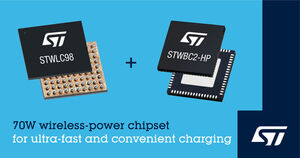
STMicroelectronics Boosts Wireless Charging Speed, Efficiency, and Flexibility with 70W High-Power Chipsets
"STMicroelectronics’ STWLC98 integrated wireless power receiver delivers faster wireless charging and flexible charge sharing for diverse portable and mobile devices for home, office, industry, healthcare, and in-car applications. When combined with the STWBC2-HP transmitter IC, the complete transmitter-receiver system can deliver up to 70W on the receiver end at high system efficiency. The STWLC98 can fully charge today’s high-end smartphones, which contain high-capacity batteries, in just under 30 minutes. In addition, the new device extends opportunities for ultra-fast and convenient charging, free of cables, sockets, and restrictive connections, to a host of new applications and contexts. Moreover, contactless charging lets product creators simplify enclosure designs, reducing cost and complexity while encouraging new slimline styles and eliminating problems associated with the socket such as contamination. Compliant with the Qi EPP 1.3 wireless-charging standard commonly used in the smartphone industry, the STWLC98 is managed by a 32-bit Arm® Cortex®-M3 core that supports a range of rich features including built-in protection; it comes with an embedded OS that simplifies Qi 1.3 standalone certification." [...]
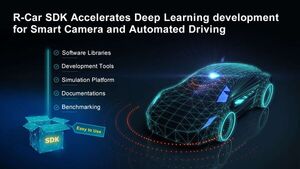
Renesas Accelerates Deep Learning Development for ADAS and Automated Driving Applications
"New R-Car SDK is an Easy-to Start & Easy-to-Use Development Framework for the R-Car V Series SoCs. Renesas Electronics Corporation (TSE:6723), a premier supplier of advanced semiconductor solutions, today unveiled the R-Car Software Development Kit (SDK), a complete software platform in a single package that enables quicker and easier software development and validation for smart camera and automated driving applications used in passenger, commercial, and off-road vehicles. "Software development and delivery has been a significant pain point for automotive system developers, involving resource-intensive customized packaging and full installations that typically take several days to complete," said Naoki Yoshida, Vice President, Automotive Digital Products Marketing Division at Renesas. "To alleviate these headaches when it comes to deep learning for automotive systems, Renesas is reinventing the developer experience, offering this new single package, multi-OS software platform that is easy for customers to access, learn, use, and install, enabling customers to quick start their deep learning development." Re-inventing SW development for Automotive Applications Automakers are increasingly turning to deep learning as they look for new ways to enable smart camera applications and automated driving systems for next-generation vehicles. However, most deep learning solutions available today are built on consumer or server applications, which do not operate under the same stringent constraints for functional safety, real-time responsiveness, and low power consumption." [...]
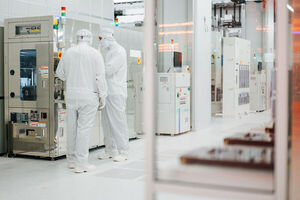
Infineon opens high-tech chip factory for power electronics on 300-millimeter thin wafers
"Infineon Technologies AG today officially opened its high-tech chip factory for power electronics on 300-millimeter thin wafers at its Villach site in Austria under the motto “Ready for Mission Future.” At 1.6 billion euros, the investment made by the semiconductor group represents one of the largest such projects in the microelectronics sector in Europe. The Villach site is one of the world’s most modern fabs and was opened by Infineon CEO Reinhard Ploss, Infineon Austria CEO Sabine Herlitschka along with EU Commissioner Thierry Breton and Austrian Chancellor Sebastian Kurz. Infineon set the stage for long-term, profitable growth based on energy efficiency and CO 2 reduction at an early stage and announced the construction of the chip factory for power electronics (“energy-saving chips”) in 2018. “The new fab is a milestone for Infineon, and its opening is very good news for our customers,” Ploss said. “The timing to create new capacity in Europe could not be better, given the growing global demand for power semiconductors. The last few months have clearly shown how essential microelectronics are in virtually every area of life." [...]
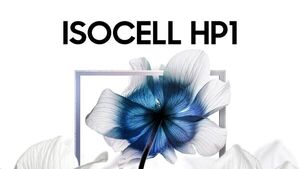
ISOCELL HP1: Resolution Redefined
"If every picture tells a story, then pictures snapped with the ISOCELL HP1 speak volumes. Combining ultra-high resolution with fast autofocus and unparalleled low-light performance, Samsung’s newest image sensor allows you to capture any moment in impeccable detail. Here’s how the ISOCELL HP1 is changing the mobile photography game. 200 Million Pixels The ISOCELL HP1’s ultra-high resolution is a big leap forward for mobile photography. Based on Samsung’s 0.64μm pixels, the ISOCELL HP1 is the world’s first 200-megapixel (MP) image sensor. The sensor’s groundbreaking pixel count allows you to faithfully capture each and every aspect of your favorite moments." [...]
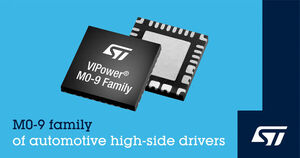
STMicroelectronics Launches Highly Integrated Intelligent High-Side Drivers for Automotive Applications
"The VN9D30Q100F and VN9D5D20FN from STMicroelectronics introduce a new generation of automotive intelligent switches, the first in the market with digital current sensing among the fully digital on-chip diagnostic features. Designed for high-side connection in applications powered from a 12V battery, the drivers simplify the hardware and software design of electronic control units (ECUs) and enhance system reliability. The new devices leverage ST’s latest-generation of VIPower* M0-9 technology to combine an efficient 40V trench vertical MOSFET with 3.3V digital logic, and high-precision analog circuitry in a 6mm x 6mm QFN package. Their compact dimensions and high integration save up to 40% of PCB area compared to comparable driver ICs already in the market. The VN9D30Q100F has two 33mW and two 90mW channels. The VN9D5D20FN has two 7.6mW and two 20mW channels." [...]

Renesas Expands RA MCU Family with New RA4 Entry-Line Group Offering Optimal Value with Balanced Low Power Performance and Feature Integration
"New RA4E1 MCUs Based on Arm® Cortex®-M33 Core Are the First Entry-Line Products of the RA4 Series and Deliver Optimized Combination of 100MHz Performance with Lowest Active Power Consumption Renesas Electronics Corporation (TSE:6723), a premier supplier of advanced semiconductor solutions, today announced the expansion of its 32-bit RA Family of microcontrollers (MCUs) with a new Group based on the latest Arm® Cortex®-M33 core. The new 100-MHz RA4E1 Group has best-in-class power consumption balanced with high performance and optimized feature integration. It enables fast design cycles and easy upgrades to other RA Family devices. Renesas’ RA Family now boasts over 150 parts ranging from 48MHz to 200MHz. The RA Family MCUs offer industry-leading power consumption specifications, a very wide range of communications options, and best-in-class security options, including Arm TrustZone® technology. All RA devices are supported by the Renesas Flexible Software Program (FSP) that includes highly efficient drivers and middleware to ease the implementation of communications and security." [...]
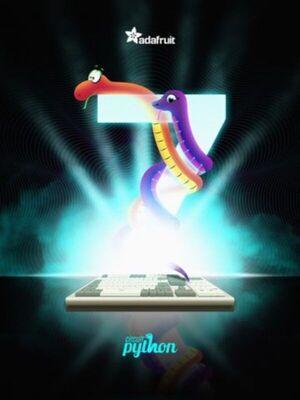
CircuitPython 7.0.0 Released!
"This is CircuitPython 7.0.0, the latest major revision of CircuitPython, and is a new stable release. Notable additions to 7.0.0 since 6.3.0 - Support for the CircuitPython development workflow over BLE. - Camera support on ESP32S2. - qrio: QR code decoding. - The keypad key-scanning module. - Run-time customization of USB devices." [...]

‘Dramatically more powerful’: world’s first battery-electric freight train unveiled
"The world’s first battery-electric freight train was unveiled at an event in Pittsburgh on Friday, amid a fresh attempt by some US lawmakers to slash carbon emissions from rail transport in order to address the climate crisis. Wabtec, the Pittsburgh-based rail freight company, showed off its locomotive at Carnegie Mellon University as part of a new venture between the two organizations to develop zero emissions technology to help move the 1.7bn tons of goods that are shipped on American railroads each year. Perched upon a strip of rail at Carnegie Mellon’s technology campus on the banks of the Monongahela River, the cherry red, 75ft-long train provided a striking background to politicians, rail executives and academics who urged a swifter industry transition away from fossil fuels. Dignitaries were allowed to clamber up a vertiginous ladder on to the train to inspect its confines, which included a small driver’s cabin in front of 500 lithium-ion battery modules, arrayed in stacks in the heart of the vehicle. The new train, known as the FLXdrive battery-electric locomotive, underwent successful trials in California earlier this year where it was found to have cut fuel consumption by 11%, which meant reducing the amount of diesel used by 6,200 gallons. Wabtec said that the next iteration of the locomotive, to be rolled out within two years, will be able to cut the consumption of diesel, the fossil fuel traditionally used in freight rail, by nearly a third." [...]

Rolls-Royce’s all-electric ‘Spirit of Innovation’ takes to the skies for the first time
"We are pleased to announce the completion of the first flight of our all-electric ‘Spirit of Innovation’ aircraft. At 14:56 (BST) the plane took to the skies propelled by its powerful 400kW (500+hp) electric powertrain with the most power-dense battery pack ever assembled for an aircraft. This is another step towards the plane’s world-record attempt and another milestone on the aviation industry’s journey towards decarbonisation. Warren East, CEO, Rolls-Royce, said: “The first flight of the ‘Spirit of Innovation’ is a great achievement for the ACCEL team and Rolls-Royce. We are focused on producing the technology breakthroughs society needs to decarbonise transport across air, land and sea, and capture the economic opportunity of the transition to net zero. This is not only about breaking a world record; the advanced battery and propulsion technology developed for this programme has exciting applications for the Urban Air Mobility market and can help make ‘jet zero’ a reality.” Business Secretary Kwasi Kwarteng said: “The first flight of Rolls-Royce’s revolutionary Spirit of Innovation aircraft signals a huge step forward in the global transition to cleaner forms of flight." [...]

FedEx Teams Up with Aurora and PACCAR to Test Autonomous Linehaul Technology
"This industry-first, three-way collaboration will actively test autonomous operations on parcel routes between Dallas and Houston, TX Today, FedEx Corp. (NYSE: FDX) will kick off a collaboration with Aurora – a leading autonomous technology developer – and PACCAR – one of the largest medium-and heavy-duty vehicle manufacturers in the world – to test Aurora’s autonomous driving technology in PACCAR state-of-the-art Autonomous Vehicle Platform (AVP) equipped trucks within FedEx linehaul trucking operations. As a first of its kind agreement, the three industry leaders will work together to accelerate the development and scaled deployment of autonomous driving technology in a safe and thoughtful way. This commercial application of Aurora’s Driver technology is the latest addition to the FedEx portfolio of autonomous and robotics solutions, as the company continues to experience record delivery volumes. The exponential growth of e-commerce has accelerated the demand for reliable, efficient transportation and logistics solutions throughout all stages of the supply chain. FedEx believes that continued innovation and automation will improve safety, efficiency, and productivity for the company’s more than 560,000 team members as they continue to move the world forward. “FedEx was built on innovation, and we always anticipate what’s next to be future-ready,” said Rebecca Yeung, vice president, advanced technology and innovation, FedEx Corporation." [...]
Ciência e Tecnologia

ITMO Scientists Create Water-Resistant Perovskite Nanocrystals
"ITMO scientists created perovskite nanocrystals that preserve their unique optical properties in water and biological fluids. This material offers new opportunities for the optical visualization of biological objects. It is an important achievement for the investigation of internal organs in living organisms and monitoring of the course of diseases. The results of this study were published in the Journal of Physical Chemistry Letters. What are perovskites Nanomaterials based on halide perovskites are widely used in solar cells, nanolasers, and light-emitting diodes due to their unique properties, luminescence, and low cost. Their ability to absorb light is also used in the production of efficient photodetectors." [...]
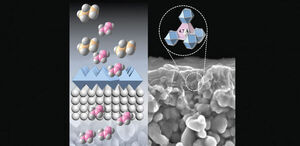
Fine-tuned hydrocarbon separation at low energy cost
"Metal organic framework membranes that selectively separate hydrocarbons set the stage for more sustainable petrochemical processes. An electrochemical approach developed at KAUST produces molecular-sieving membranes that could enable a cheap energy-efficient separation of light hydrocarbons, such as olefins and paraffins. This separation, critical for the petrochemical industry, usually relies on extremely energy-intensive processes, such as distillation. Membrane-based strategies have emerged as promising alternatives to heat-driven separation approaches. Existing polymer-based membranes are not selective enough for hydrocarbon separation and also undergo plasticization, a structural change that alters their pores, at high pressure. On the other hand, highly porous crystalline materials, called face-centered cubic metal-organic frameworks (MOFs), exhibit modular pores with precisely tunable triangular apertures." [...]

A new method for removing lead from drinking water
"Engineers have designed a relatively low-cost, energy-efficient approach to treating water contaminated with heavy metals. Engineers at MIT have developed a new approach to removing lead or other heavy-metal contaminants from water, in a process that they say is far more energy-efficient than any other currently used system, though there are others under development that come close. Ultimately, it might be used to treat lead-contaminated water supplies at the home level, or to treat contaminated water from some chemical or industrial processes. The new system is the latest in a series of applications based on initial findings six years ago by members of the same research team, initially developed for desalination of seawater or brackish water, and later adapted for removing radioactive compounds from the cooling water of nuclear power plants. The new version is the first such method that might be applicable for treating household water supplies, as well as industrial uses. The findings are published today in the journal Environmental Science and Technology – Water, in a paper by MIT graduate students Huanhuan Tian, Mohammad Alkhadra, and Kameron Conforti, and professor of chemical engineering Martin Bazant." [...]

Engineers discover way to turn organic waste into renewable biofuel additives using radiation
"Engineers at Lancaster University have led research that discovers a way to generate renewable biofuel additives, using radiation that could be derived from nuclear waste. The renewable proportion of petrol is set to increase to 20 per cent over the coming years, meaning the discovery of a new production pathway for these additives could help in the fight to cut carbon dioxide emissions and tackle climate change. In the research paper entitled ‘Nuclear-driven production of renewable fuel additives from waste organics’, published in the science journal Nature Communications Chemistry, engineers propose a process to generate one such additive, solketal, using waste from both biochemical and nuclear industries – termed a nuclear biorefinery. Lancaster University PhD researcher Arran Plant said: “This research presents a new advance that utilises radiation that could, in the future, be derived from nuclear waste to produce renewable biofuel additives from biodiesel waste, which could then be used in modern petroleum fuel blends. With the renewable proportions of petroleum-derived fuels set to increase from 5 per cent to 20 per cent by 2030, fuel additives sourced this way could help address net-zero carbon emission targets.” Malcolm Joyce, Professor of Nuclear Engineering at Lancaster University, said: “Co-generation with nuclear energy is an important area of current research, for example, using heat alongside the production of electricity. We set out to determine whether radiation might also present a similar possibility, and discovered that it can: in this case yielding a low-carbon fuel additive.” Dr Vesna Najdanovic, an expert in biofuels from Aston University, and previously at Lancaster University, said: “I am so excited about our work as it reveals a new method for processing wastes from biodiesel industry using spent nuclear energy." [...]
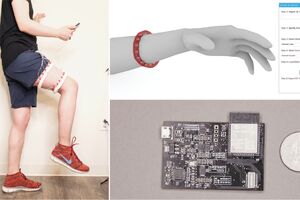
Making health and motion sensing devices more personal
"An electrical impedance tomography toolkit lets users design and fabricate health and motion sensing devices. Previous definitions of “well-being,” limited to taking a brisk walk and eating a few more vegetables, feel in many ways like a distant past. Shiny watches and sleek rings now measure how we eat, sleep, and breathe, calling on a combination of motion sensors and microprocessors to crunch bytes and bits. Even with today's variety of smart jewelry, clothing, and temporary tattoos that feel equal parts complex and manageable, scientists from MIT’s Computer Science and Artificial Intelligence Laboratory (CSAIL) and Massachusetts General Hospital’s (MGH) Center for Artificial Intelligence (CPAI) wanted to make things a little more personal. They created a toolkit for designing health- and motion-sensing devices using something called “electrical impedance tomography (EIT),” a fancy word for an imaging technique that measures and visualizes a person’s internal conductivity. (EIT is typically used for things like observing lung function or detecting cancer.)" [...]

The nanophotonics orchestra presents: Twisting to the light of nanoparticles
"Physicists at the University of Bath observe a new physical effect in chiral (twisted) nanoparticles. Physics researchers at the University of Bath discover a new physical effect relating to the interactions between light and twisted materials – an effect that is likely to have implications for emerging new nanotechnologies in communications, nanorobotics and ultra-thin optical components. In the 17th and 18th centuries, the Italian master craftsman Antonio Stradivari produced musical instruments of legendary quality, and most famous are his (so-called) Stradivarius violins. What makes the musical output of these musical instruments both beautiful and unique is their particular timbre, also known as tone colour or tone quality. All instruments have a timbre – when a musical note (sound with frequency fs) is played, the instrument creates harmonics (frequencies that are an integer multiple of the initial frequency, i.e. 2fs, 3fs, 4fs, 5fs, 6fs, etc.)." [...]
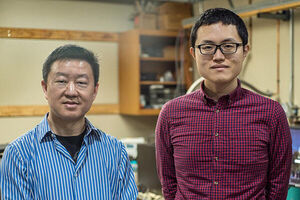
Engineering researchers develop new explanation for formation of vortices in 2D superfluid
"Researchers at the FAMU-FSU College of Engineering and the National High Magnetic Field Laboratory have new insight about the formation of vortices in a type of quantum fluid, work that could help our comprehension of the physics mystery of how vortex clusters form and provide valuable understanding into the atmospheric swirling motion on planets such as Earth and Jupiter. The researchers revealed an alternative explanation for the formation of so-called Onsager vortices in a two-dimensional superfluid, a type of quantum fluid that can flow without friction. Their findings were published in Physical Review Letters. “This finding gives us a new explanation for how these vortices might form and is an important step toward continuing to improve our understanding of quantum physics,” said Wei Guo, associate professor in mechanical engineering and lead investigator of the study. In 1949, Nobel Laureate Lars Onsager proposed a simple theory relating to our understanding of the swirling motion in turbulent 2D fluids, which are fluids constrained to move in a two-dimensional space. Onsager’s theory says when energy is added constantly into a 2D turbulent fluid with chaotic small swirls (formally called vortices), those swirls rotating in the same direction would cluster to form large-scale persistent swirls when the energy is sufficiently high." [...]

Research guides future of plastic waste chemical recycling
"New research from the College of Engineering aims to ease the process of chemical recycling – an emerging industry that could turn waste products back into natural resources by physically breaking plastic down into the smaller molecules it was originally produced from. In a new paper, “Consequential Life Cycle Assessment and Optimization of High-Density Polyethylene Plastic Waste Chemical Recycling,” published in the Sept. 13 issue of the journal ACS Sustainable Chemistry & Engineering, Fengqi You, the Roxanne E. and Michael J. Zak Professor in Energy Systems Engineering and doctoral student Xiang Zhao detail a framework incorporating several mathematical models and methodologies that factor everything from chemical recycling equipment, processes and energy sources, to environmental effects and the market for end products. The framework is the first comprehensive analysis of its kind that quantifies the life-cycle environmental impacts of plastic waste chemical recycling, such as climate change and human toxicity. Billions of tons of plastic have been produced since the 1950s, yet most of it – 91%, according to one often cited study – has not been recycled. While growing landfills and contaminated natural areas are among the concerns, the failure to reduce and reuse plastic is also seen by some as a missed economic opportunity. That’s why the emerging industry of chemical recycling is capturing the attention of the waste industry and researchers like You, who is helping to identify optimal technologies for chemical recycling and providing a roadmap for the future of the industry." [...]
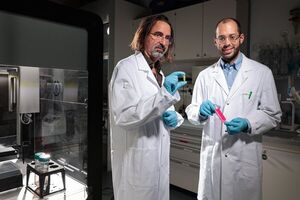
EPFL engineers introduce a new approach for recycling plastics
"Two EPFL engineers have come up with a revolutionary new method for tackling plastic pollution by harnessing the inner workings of proteins. The result? A whole new way of looking at plastic recycling. Each human being uses, on average, 30 kg of plastic per year. Given that global life expectancy currently stands at approximately 70 years, each person will discard some two metric tons of plastic in his or her lifetime. Multiply that by the number people on earth – which is growing constantly – and the total is staggering." [...]
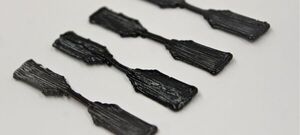
3D Nano-inks Push Industry Boundaries
"A new, 3D-printable polymer nanocomposite ink has incredible properties — and many applications in aerospace, medicine and electronics. Mechanical engineering researchers at Michigan Technological University have created a way to make a 3D-printable nanocomposite polymeric ink that uses carbon nanotubes (CNTs) — known for their high tensile strength and lightness. This revolutionary ink could replace epoxies — and understanding why its properties are so fantastic is a first step toward its mass use. 3D printing, also known as additive manufacturing, is more versatile and efficient than casting. It adds a material with precision, often in complex geometries, with considerably less excess to cut away. Adding low-dimensional nanomaterials such as CNTs, graphene, metal nanoparticles and quantum dots allows 3D-printed materials to adapt to external stimuli, giving them features such as electrical and thermal conductance, magnetism and electrochemical storage." [...]
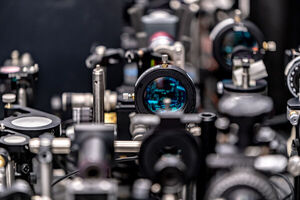
New optical ‘transistor’ to speed up computation up to 1,000 times, at lowest switching energy possible
"An international research team led by Skoltech and IBM has created an extremely energy-efficient optical switch that could replace electronic transistors in a new generation of computers manipulating photons rather than electrons. In addition to direct power saving, the switch requires no cooling and is really fast: At 1 trillion operations per second, it is between 100 and 1,000 times faster than today’s top-notch commercial transistors. The study comes out Wednesday in Nature. “What makes the new device so energy-efficient is that it only takes a few photons to switch,” the first author of the study, Dr. Anton Zasedatelev commented. “In fact, in our Skoltech labs we achieved switching with just one photon at room temperature! That said, there is a long way to go before such proof-of-principle demonstration is utilized in an all-optical co-processor,” added Professor Pavlos Lagoudakis, who heads the Hybrid Photonics Labs at Skoltech." [...]
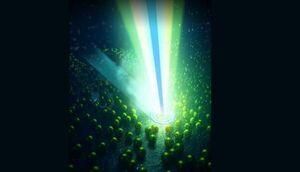
LLNL explores laser beam shaping to improve metal 3D printing
"While laser-based 3D printing techniques have revolutionized the production of metal parts by greatly expanding design complexity, the laser beams traditionally used in metal printing have drawbacks that can lead to defects and poor mechanical performance. Researchers at Lawrence Livermore National Laboratory (LLNL) are addressing the issue by exploring alternative shapes to the Gaussian beams commonly used in high-power laser printing processes such as laser powder bed fusion (LPBF). In a paper published by Science Advances, researchers experimented with exotic optical beam shapes known as Bessel beams — reminiscent of bullseye patterns — which possess a number of unique properties such as self-healing and non-diffraction. They discovered that the application of these types of beams reduced the likelihood of pore formation and “keyholing,” a porosity-inducing phenomenon in LPBF exacerbated by the use of Gaussian beams. The work is featured on the journal’s Sept. 17 cover. LLNL researchers said the work indicates that alternative shapes such as Bessel beams could alleviate the chief concerns in the LBPF technique: the large thermal gradient and complex melt pool instabilities occurring where the laser meets the metal powder." [...]
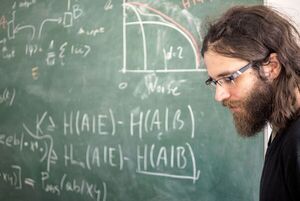
Quantum cryptography Records with Higher-Dimensional Photons
"A research team at TU Wien developed a new quantum transmission protocol that allows a higher data transmission rate and is much more robust against interference. Quantum cryptography is one of the most promising quantum technologies of our time: Exactly the same information is generated at two different locations, and the laws of quantum physics guarantee that no third party can intercept this information. This creates a code with which information can be perfectly encrypted. The team of Prof. Marcus Huber from the Atomic Institute of TU Wien developed a new type of quantum cryptography protocol, which has now been tested in practice in cooperation with Chinese research groups: While up to now one normally used photons that can be in two different states, the situation here is more complicated: Eight different paths can be taken by each of the photons. As the team has now been able to show, this makes the generation of the quantum cryptographic key faster and also significantly more robust against interference. The results have now been published in the scientific journal "Physical Review Letters"." [...]

Glass blowing adapts to Covid-19 protocols
"The Great Glass Pumpkin Patch returns to MIT with 2,000 new pumpkins. Team-based, hands-on activities at MIT have been seriously challenged by the Covid pandemic. This has certainly been true for the W. David Kingery Ceramics and Glass Lab at MIT, where students work in close proximity learning the ancient craft of glass blowing. Practices long considered normal — like sharing blowpipes — suddenly became off-limits in the context of a highly transmissible and health-threatening virus. In September 2020, the Glass Lab received permission to restart limited operations. No students would be in the lab, and only a few senior instructors were granted access for the purpose of blowing 2,000 glass pumpkins for the annual (and now iconic) MIT Great Glass Pumpkin Patch fundraiser." [...]

Laser treatment shows potential for reducing industrial chemical processing for vehicles
"Long-lasting protection from corrosion is essential for materials used for vehicles and aircraft to ensure structural integrity amid extreme operating conditions. Two chemical pre-treatment processes are widely used in industrial settings to prepare for coating adhesion and protect aluminum alloy surfaces against corrosion. While highly regulated, both processes use large quantities of hazardous compounds with known environmental and health risks. A multidisciplinary team of scientists at the Department of Energy’s Oak Ridge National Laboratory has applied a laser-interference structuring, or LIS, technique that makes significant strides toward eliminating the need for these hazardous chemicals. The novel application of the LIS method answers a call from the U.S. Department of Defense for research projects that explore nonchemical alternatives for corrosion protection in military vehicles and aircraft systems. Chromate conversion coating, or CCC, uses hexavalent chromium, a known carcinogen, to inhibit corrosion." [...]
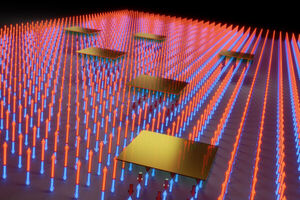
Researchers find a new way to control magnets
"Reversible system can flip the magnetic orientation of particles with a small voltage; could lead to faster data storage and smaller sensors. Most of the magnets we encounter daily are made of “ferromagnetic” materials. The north-south magnetic axes of most atoms in these materials are lined up in the same direction, so their collective force is strong enough to produce significant attraction. These materials form the basis for most of the data storage devices in today’s high-tech world. Less common are magnets based on ferrimagnetic materials, with an “i.” In these, some of the atoms are aligned in one direction, but others are aligned in precisely the opposite way. As a result, the overall magnetic field they produce depends on the balance between the two types — if there are more atoms pointed one way than the other, that difference produces a net magnetic field in that direction." [...]
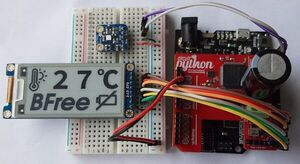
Now everyone can build battery-free electronic devices
"Last year, computer engineers from Northwestern University and Delft University of Technology (TU Delft) introduced the world’s first battery-free Game Boy, which harvests both solar energy and the user’s kinetic energy from button mashing to power an unlimited lifetime of game play. The same team now introduces a new platform that enables makers, hobbyists and novice programmers to build their own battery-free electronic devices that run with intermittent, harvested energy. Called BFree, the system includes energy-harvesting hardware (the BFree Shield) and a power-failure-resistant version of Python, one of the most accessible and most used programming languages. All the user needs is a basic understanding of Python in order to quickly and easily turn any do-it-yourself (DIY) smart device into a battery-free version. With this technology, novice programmers can now turn their DIY battery-powered motion sensor, for example, into a solar-powered sensor with an infinite lifetime. The research will be presented virtually at 11 a.m. EDT (U.S.) on Wednesday, Sept. 22, at UbiComp 2021, the premier conference for ubiquitous computing." [...]
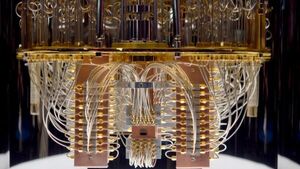
UO physicists, colleagues offer new way to control qubits
"A research team that includes two UO physicists have outlined new techniques for controlling the building blocks of quantum computing, a potentially significant step toward making such computers more accurate and useful. Physicists David Allcock and David Wineland are founders of the new Oregon Ions Laboratory, which was recently set up in the basement of Willamette Hall. They are among 12 authors of a new paper, which is based on an experiment at the National Institute for Standards and Technology in Boulder, Colorado. Both scientists previously worked at the Colorado lab and continued to collaborate on the project after coming to the UO in 2018. The techniques, described in the journal Nature, involve the use of trapped-ion quantum bits, or qubits, in quantum computing and simulations. They could lead to improvements in the operation of quantum computers, which still make too many computation errors to be effective tools, the physicists said." [...]
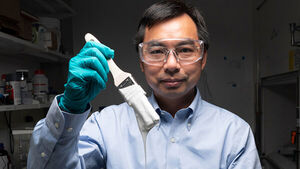
Purdue record for the whitest paint appears in latest edition of 'Guinness World Records'
"Want to save big on your air conditioning bills? Wait a few years to coat your home with the world’s whitest paint, which may dramatically reduce or even eliminate the need for air conditioning. The paint, developed at Purdue University, has earned a Guinness World RecordsTM title. The record appears in the 2022 edition of Guinness World Records, available for purchase starting Thursday (Sept. 16). Breaking a record for the whitest paint wasn’t a goal for the researchers – curbing global warming was. “When we started this project about seven years ago, we had saving energy and fighting climate change in mind,” said Xiulin Ruan, a professor of mechanical engineering at Purdue, in a podcast episode of “This Is Purdue.” Ruan invented the paint with his graduate students." [...]
Documentação
A documentação é parte essencial do processo de aprendizagem e a Internet além de artigos interessantes de explorar também tem alguma documentação em formato PDF interessante de ler. Todos os links aqui apresentados são para conteúdo disponibilizado livremente pelo editor do livro.

The Official Raspberry Pi Handbook 2022
"Get even more from Raspberry Pi with the brand-new official Handbook! Over 200 pages of Raspberry Pi packed with inspirational projects, essential tutorials & guides, practical tips and definitive reviews! Inside The Official Raspberry Pi Handbook 2022 QuickStart guide to setting up your Raspberry Pi computer Updated with Raspberry Pi Pico The very best projects built by your Raspberry Pi community Discover incredible kit and products for your projects In-depth tutorials & guides for Raspberry Pi Over 200 pages of essential advice! " [...]
Projetos Maker
Diversos Projetos interessantes.
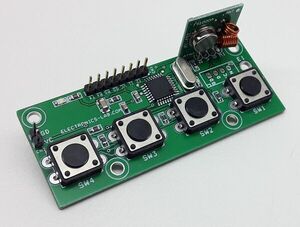
4 Channel 315Mhz RF Remote Transmitter – Arduino Compatible
"This is a 4 channel RF Transmitter unit that consists of an Atmega328 microcontroller, 4 x tactile switches with pull-down resistors, programming port, and 315Mhz RF transmitter module. It is Arduino compatible open-source project that can be used for many RF transmitter applications. It is advisable to use a 30cm hook-up wire as an antenna to enjoy a maximum range of the transmitter. " [...]

A user-friendly interface in a simple timer
"Make a user-friendly interface with an alphanumeric display, a rotary encoder and a finite state machine This project explains how a finite state machine may be useful to make a user-friendly interface with an alphanumeric display and a rotary encoder. As an example we will realize a simple timer, but you will be able to create your own machines easily. History I wanted to put several devices into the same box. In this box I connected an Arduino Nano Every with a 2 x 16 characters LCD (Liquid Crystal Display), a rotary encoder, a RTC (Real Time Clock), a beeper and a temperature and pressure measuring module. And now, by turning the rotary encoder, I can access a clock and calendar, a thermometer and barometer, a tide clock, a timer and so on... By pushing the rotary encoder, I can adjust many parameters: the temperature unit (°C, °F or °K), the pressure unit (mmHg or hPa), the altitude which is used to calculate the pressure at sea level, the brightness of the LCD... The Arduino board is behind a hole of the box, so I can connect it to my PC and program it without opening the box." [...]

Wireless Fan Fully Controlled Using Your Phone!
"In this project, we will be creating a wireless fan that you can fully control using your phone over WiFi. You can rotate it left and right, tilt it up and down, and choose the fan speed and rotation speed. We will be using the ESP32 with a desktop PC fan and a couple of motors to achieve this very easily. I have made a video that goes over the whole project an explains each steps very clearly. So if you want a video version, I highly recommend watching the video as it is much easier to follow. Let's get to it!" [...]
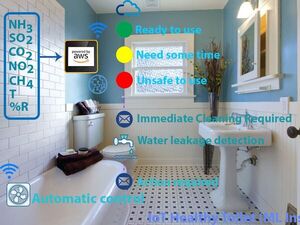
IoT Healthy Toilet
"A smart toilet that maintains a healthy environment analyzing air quality data using machine learning. Introduction Atmospheric conditions continue to deteriorate each year due to the growth of civilization and increasing unclean emissions from industries and automobiles. Although air is an indispensable resource for life, many people are indifferent to the severity of air pollution or have only recently recognized the problem. Among various types of pollutants such as water, soil, thermal, and noise, air pollution is the most dangerous and severe, causing climate change and life-threatening diseases. According to the World Health Organization (WHO), 90 percent of the population now breathes polluted air, and air pollution is the cause of death for 7 million people every year. The health effects of pollution are very severe that cause stroke, lung cancer, and heart disease." [...]

Dub Siren V3 - 555 Project
"Ok - so this is going to be my last dub siren build (maybe...). This new one is an extension on the others that I have built and is definitely the best and easiest version I have designed. So what is a dub siren? Dub sirens originated in Jamaica in the late 60’s, early 70’s where they started to use police or fire engine sirens and analog synths to create sound effects for their music. Later it was emulated to live DJ performances. This dub siren is based around 2 x 555 timers and a LM741 Op amp." [...]

Mask and Heart Rate Detection using M5Core2
"Device to detect if person is wearing mask and having healthy heart rate using M5Stack Core2, ESP32CAM, AWS IoT and Edge Impulse Story After the pandemic most of the offices will start for on-site work and schools will start, during this time we also need to take care if any employee or student is having correct body temperature and is wearing mask. Instead of hiring someone and risk their life to check temperature and mask for so much employees and students is tough task. So to solve this problem we want to create a device which monitors their heart rate and checking are they wearing a mask using Edge Impulse model on AWS IoT Edukit and Embedded Camera. All the Computer Vision will be completely done over ESP32 Cam using Deep Learning model. The Mask Detection model is trained on Edge Impulse and the generated library is used in ESP32 CAM. The Data is sent to AWS IoT suing MQTT and major alerts like Person is Not Wearing Mask is sent as email to Admin using AWS SES Flow: - The IR Distance sensor will check when user is standing in front of Device and start camera and heart sensor - Read the Image and inference it on Mask Model." [...]
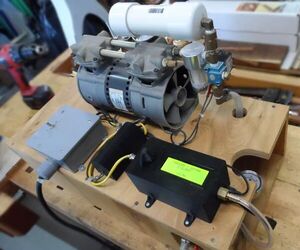
Digital Vacuum Regulator
"This is a Veneer Vacuum Press (Vacuum Pump) which has been modified with a Digital Vacuum Regulator to operate with a selectable vacuum pressure. This device is a replacement for the Vacuum Controller in my DIY Veneer Vacuum Press built with plans from VeneerSupplies.com or JoeWoodworking.com. These are great plans and the pumps operate very satisfactorily as designed. However, I'm a tinkerer, and I wanted to enhance my pump with the ability to easily and readily control the pressure settings (without a screw driver) over a wider range of pressures with a digitally controlled regulator. Recently, a need arose which was beyond the lower limits of my Vacuum Controller (Type 1). This project required a Type 2-Vacuum Controller for pressures in the range of 2 to 10 in-Hg." [...]
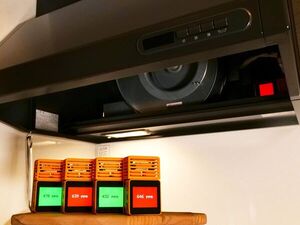
Automatic Ventilation System with CO2 Monitors
"At Akihabara Hackerspace, we have automated the ventilation process with CO2 monitors, a fan, AWS IoT Edukit, and IoT-related AWS Services. Problem Just limiting the number of guests is not enough to prevent COVID-19, so we have mandatory rules of wearing a face mask, practicing social distancing, washing hands, and disinfecting after use. In addition to these rules, we believe that keeping the air clean is also one of the effective measures to prevent the disease. Researchers say that COVID-19 transmission risk can be reduced if the space is well ventilated [1]. How do you know if the space is well ventilated? One of the indicators is CO2." [...]
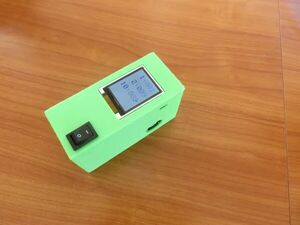
Arduino-controlled Particulate Air Sensor
"Summer wildfire smoke has been a summer problem for a while where I live in the western United States, and has been particularly bad this year. The daily question was "How bad is the air outside?" Or inside, for that matter. There are several sources for air quality data, but there are no sensors close to where I live to tell me the local conditions. Last year, I tried to guess based on visible haze, but this proved to be woefully inadequate. This Instructable describes the device I made to measure my local particulate matter pollution." [...]
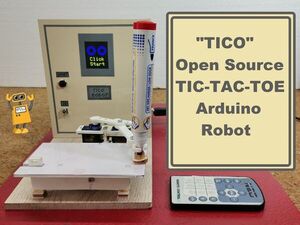
TICO - Open Source Tic-Tac-Toe Arduino Robot
"TICO is a 3D-printed, Arduino-powered Tic-Tac-Toe robot that inspires kids to learn code, robotics, and electronics. In this article, we will explain how to print and assemble Tico. Then, we’ll provide a working code that can bring Tico to life and ready to play. Down the road, we will also release a series of coding lessons for kids to learn to code while teaching Tico to play Tic-Tac-Toe. " [...]

315Mhz RF Remote Receiver with On-Board Relay – Arduino Compatible
"This is one channel RF Receiver with an onboard Relay. The project can be used for ON/OFF control of AC or DC loads using an RF remote. It’s an Arduino compatible Receiver project that consists of, Atmega328 microcontroller, 315MHz RF Receiver, 12v Relay, 5V Regulator, etc. " [...]
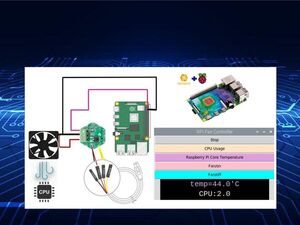
Raspberry Pi Fan Controller Using Hexabitz Mosfet Module
"This project have the ability to only turn the fan on when needed by monitoring the core temperature and CPU usage. In this tutorial I add the ability to only turn the fan on when needed by monitoring the Raspberry Pi core temperature and CPU usage. This way, a noisy fan isn't running all the time. An easy way to add a fan is to simply connect the fan leads to a 3.3V or 5V pin and to ground. Using this approach, the fan will run all the time. I think it is much more interesting to turn the fan on when it reached or surpassed a high temperature threshold, and then turn it off when the CPU was cooled below a low temperature threshold." [...]

The Expletive Keyboard
"I built a keyboard that contains only the letters you really need. A month or two ago, I was browsing Instagram and saw the post in the screenshot. It was what appeared to be a photoshopped keyboard that only contained the letters necessary to tell someone off. I thought it was funny and decided to build a real, functional version. This is the result! It does, indeed, work." [...]
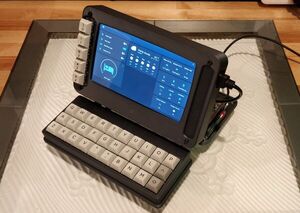
OLKB-Terminal
"Terminal with builtin ortholinear keyboard and touch screen as a home automation interface. Features - Step and STLs available for non-commercial use. - 7" Touch Screen - Raspberry pi 4 - Home assistant loads in kiosk mode. - 5x1 buttons to interact directly with home assistant with physical buttons" [...]
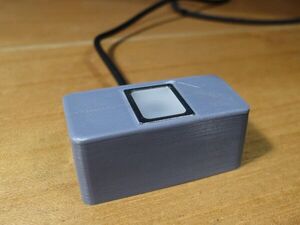
DIY Fingerprint Login for Any Computer (XIAO + Arduino +...
"You rest your finger on the sensor. The light will come on, and if it is the correct finger, it types in your password for you. So, it seems like everything nowadays has some sort of biometric login. My work laptop has a fingerprint scanner which I love. My phone also has a fingerprint login, like who even types their passwords nowadays. Just like everything else, I want my workstation to have a biometric login." [...]
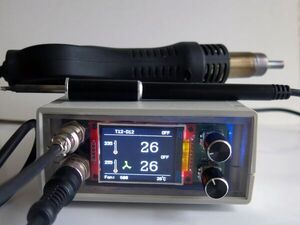
STM32 Soldering and Rework Station with TFT Display
"Soldering station supported Hakko T12 tips and rework Hot Air Gun 858D using color TFT ili9341 display. This is a third release of combined soldering iron controller for Hakko T12 tips and 858D rework station based on STM32 micro controller. This time the oled display was replaced by ili9341 TFT one with SPI interface. There are several display variants (2.2", 2.4", 2.8" or 3.2"), in the market, so you can chose the one that satisfies your requirements, I used 2.2" display. The touch screen feature is not used in this project, but you can use display with touch screen panel. The soldering controller supports using soldering iron and Hot Air Gun at the same time." [...]

ESP-32 Based BLE Mouse With Magnetic Mouse Pad
"This instructable is about building an esp32 based BLE mouse, unlike using the traditional method to build a mouse using optical sensors, this mouse works based on magnets embedded in a custom 3d printed mouse pad. Make sure to read until the end of the article to know how this mouse is built from scratch and also learn how to navigate the magnetic surface using just a single magnetic pole and with a bunch of hall effect sensors! " [...]

What’s Destroying My Yard? Pest Detection With Raspberry Pi
"My yard is under attack. That’s why I used a Raspberry Pi, a Pi camera, and some machine learning to catch my yard’s attackers in action. My yard is under attack. Woodpeckers are drilling holes in my deck, something is living under (and destroying) my shed, and moles have dug a series of tunnels that rival most city’s subway systems. I’ve watched a lot of war movies, so I know the first step to winning any war is to understand your enemy. And as a software developer, I’m constantly looking for an excuse to overengineer solutions to my problems." [...]
ESP32 PC With Tiny Basic on Steroids
"In this Instructable I am going to show how to build the second version of a simple retro style PC based on an ESP32 and few other components. This PC runs a modified version of Tiny Basic, a simplified dialect of BASIC, and generates the output for a VGA monitor. The resolution is 640x200 pixels, allowing 80x25 asci characters in 16 colors. It uses a PS2 keyboards, and the code can be saved on a micro SD. I have created a breadboard that included a VGA and PS2 port, as well as a piezo and an adaptor for the micro SD reader. Some of the ESP32 I/O free pins can be directly driven by dedicated BASIC commands." [...]
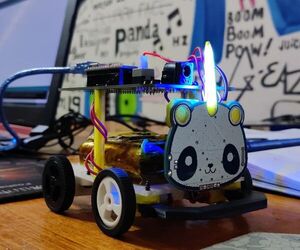
Pandacorn Bot
"Hey Everyone how you doin! So recently I made this MICRO FIGHTER BOT which was a small Bluetooth-controlled robot that moves really fast. PANDACORN BOT is a variant of MICRO FIGHTER BOT which has few tweaks like increase length & Height, and a PANDA-UNICORN Hybrid PCB in front which kinda looks like this robot face. It works exactly the same but the only difference is PCB added at the front part, Pandacorn PCB is another project of mine that I made a few weeks ago. It's basically a PCB Badge that has LEDs in the Horn Part, LEDs are controlled by a mosfet and this mosfet is controlled by an onboard Attiny13A. In this version, I removed everything from the PCB badge except for the LEDs and Mosfet and use D9 Pin of Arduino Nano to drive the LEDs with a Fade Sketch added into the main code." [...]
Secção Videos
Videos interessantes.
That's all Folks!



